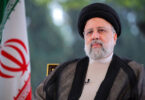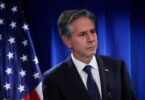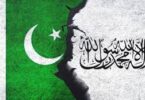Prime Minister Imran Khan launched an apparently ambitious “Poverty Alleviation” programme with a total outlay of Rs. 80 billion. The programme will be mainly focused on generating self employment in rural areas and women empowerment with small scale diary farming and poultry farming in rural areas. Saving accounts shall be opened for 5.7 million women and a significant increase shall be given in OEBI pension.
There are a number of political and economic factors that pushed 40 percent of population of Pakistan below the poverty line. The major one is the economic polices that were implemented in the so called oligarchic governments which accentuated and further for the protection which still two mainstream political parties are bent upon creating and sustaining the political instability. Another reason is the constant lowering of expenditure on social sector development particularly on health and education. In the decade of 1960s the percentage of population below the poverty line was less as compared with the present one because bulk of the employment was generated by the private sector industrial and commercial enterprises and private banks.
The policy of nationalisation of all private sector industries and banks pushed down the economic growth rate from 8 percent to 2.2 percent in 1972-77. The civilian governments did not bother to have an authentic yardstick for defining poverty index. The elected government of 200-02 made a serous effort and established a center for Research in Poverty and Income Distribution within in the Planning Commission. The center defined poverty in terms of Rs.673 per capita income and calories intake of 2350 per head when Rupee-US dollar parity was 60 for a dollar. The World Bank authenticated this study. This useful UNDP funded research center was dissolved by PPP government in 2010.
The civilian governments have all along remained disinterested in poverty alleviation. On the contrary unelected governments did make serious efforts for poverty reduction but the impact of the programmes launched for achieving this objective was limited due overwhelming bureaucratic control which diminished the scope of community participation. The International Monetary Fund (IMF) approved a loan of $ 1.3 billion for Poverty Reduction and Growth Facilitation in the government of President Musharraf. The signing of the programme was followed by generous foreign debt re-profiling by the Paris Club to provide enough fiscal space to the government to increase expenditure on poverty alleviation and meet the UN fixed targets of Minimum Development Goal (MDG) and enable Pakistan to move the next phase of Sustainable Development Goal (SDG). However, the poverty focused expenditure of 4 percent of the GDP during 2002-7 resulted in increase in income in sectors where the poor or vulnerable were not direct beneficiaries.
The PPP third government launched a political gimmick of Benazir Income Support Programme (BISP) doling out a peanut amount of Rs. 1000 per month for which even funds were withdrawn from Earthquake Rehabilitation Programme which were provided by the foreign donors for the rehabilitation of October, 2005 earthquake affected people. Massive embezzlement in allocated funds of BISP was done. Comparing the size PTI government poverty alleviation programme with the earlier programme of poverty reduction and growth facilitation and the likely bureaucratic control on the new programme and high rate of interest on micro financing for self employment the prospects of intended results may not be encouraging.






